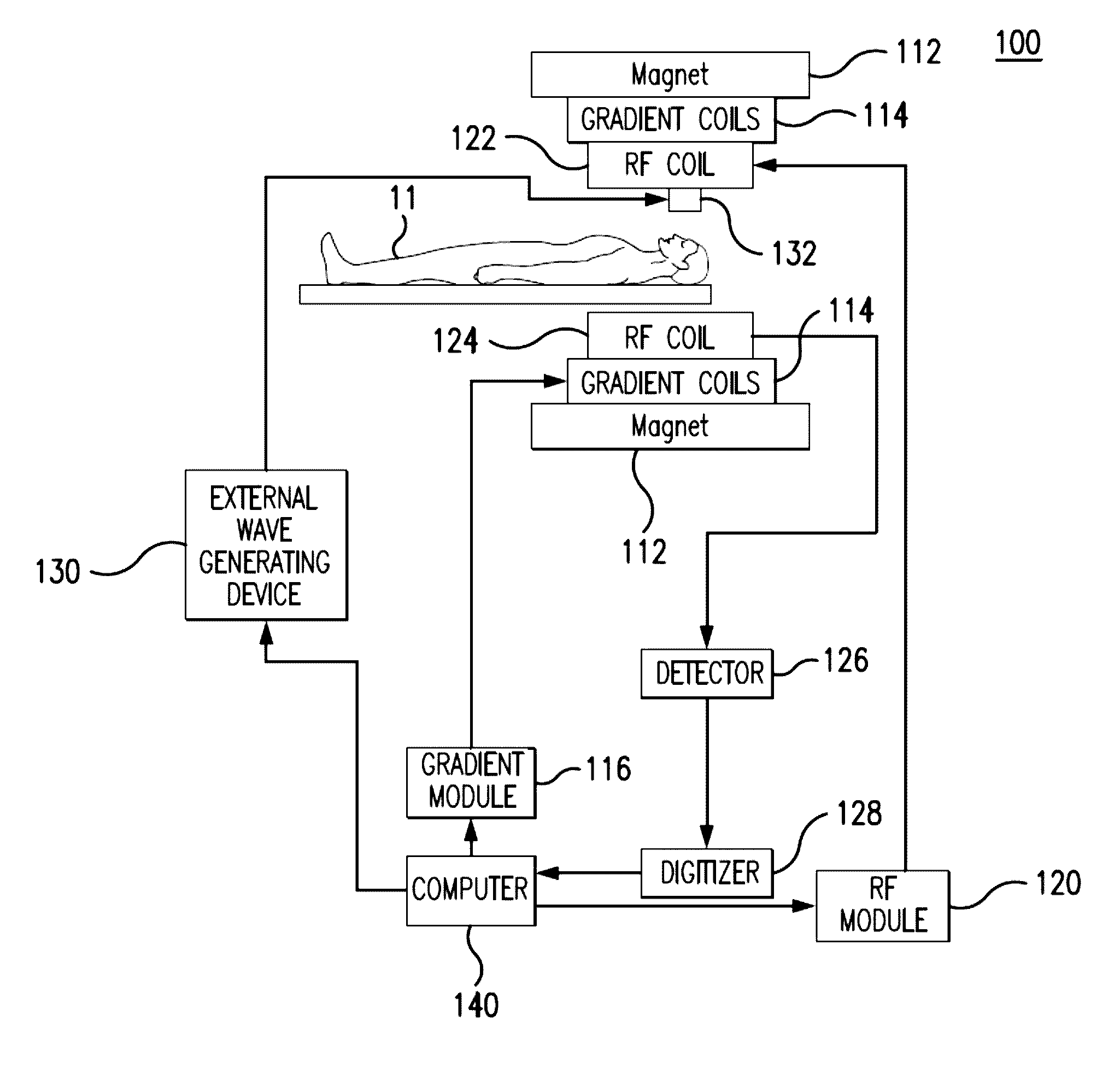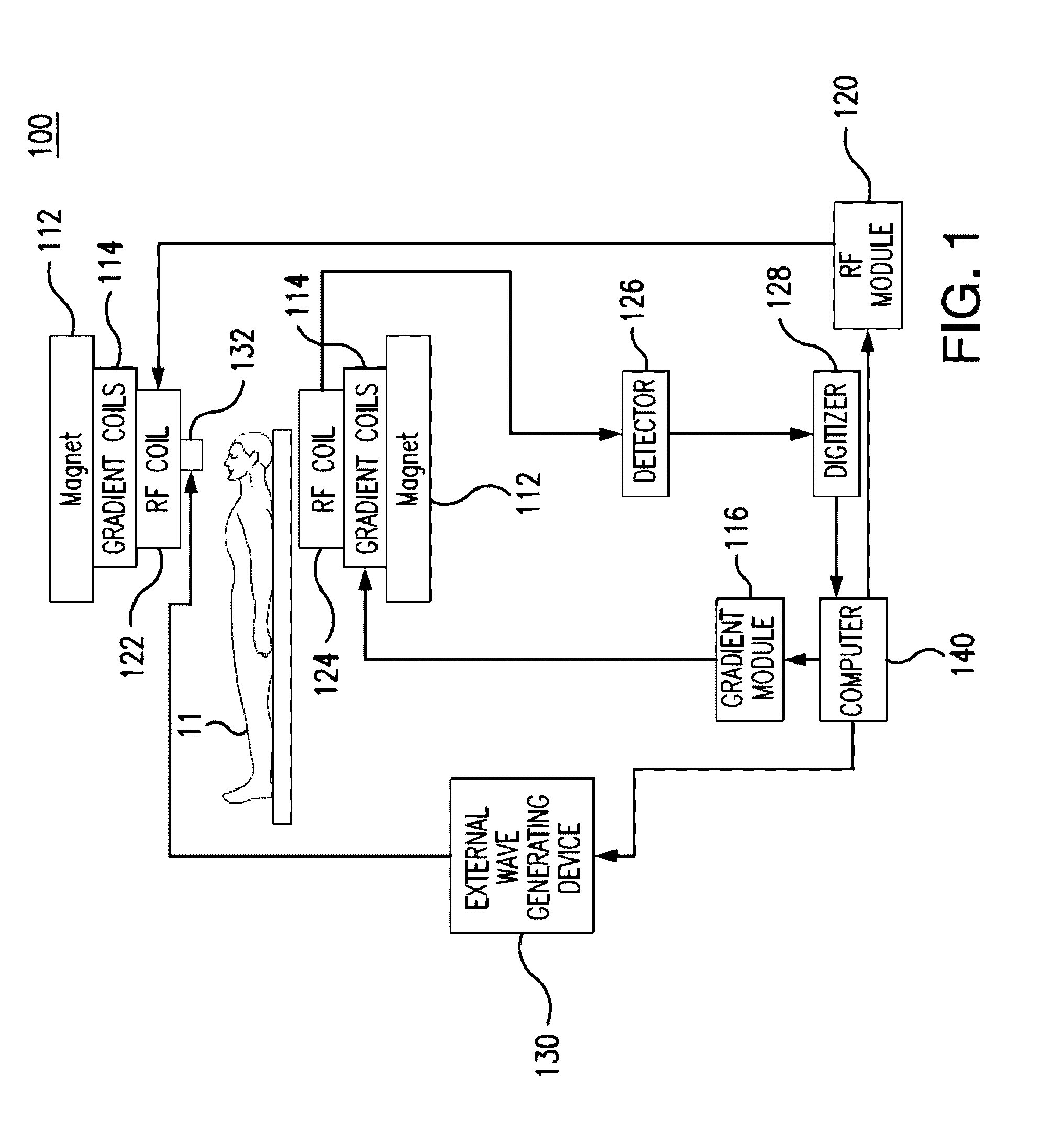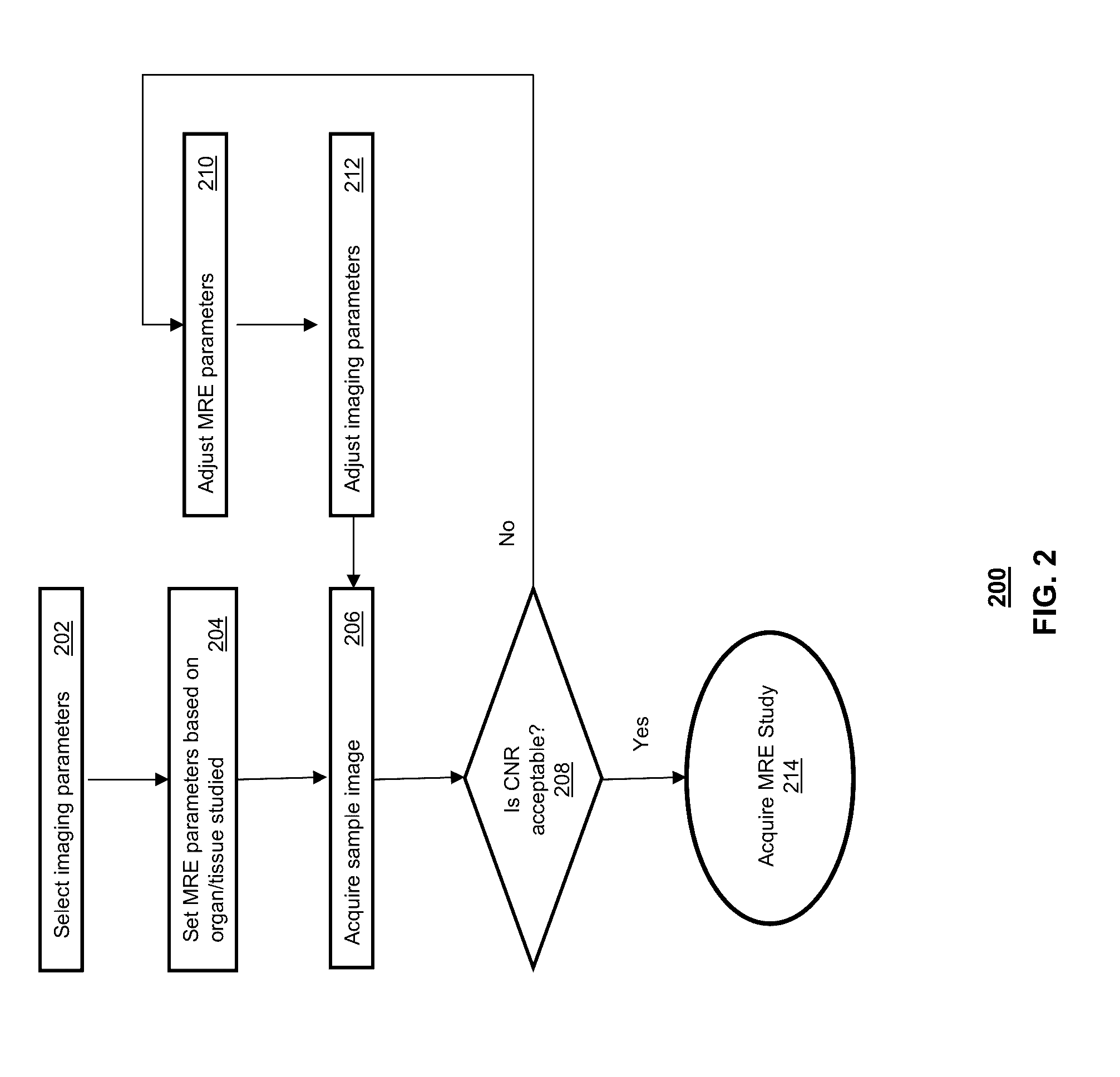Echo-planar imaging magnetic resonance elastography pulse sequence
a magnetic resonance elastography and pulse sequence technology, applied in the field of magnetic resonance imaging, can solve the problems of inability to rapidly capture three dimensions, inability to accurately detect the image, and inability to rapidly capture full vectors, etc., and achieve the effect of facilitating on
- Summary
- Abstract
- Description
- Claims
- Application Information
AI Technical Summary
Benefits of technology
Problems solved by technology
Method used
Image
Examples
Embodiment Construction
[0013]Unless otherwise explained, all technical and scientific terms used herein have the same meaning as commonly understood by one of ordinary skill in the art to which a disclosed disclosure belongs. The singular terms “a,”“an,” and “the” include plural referents unless context clearly indicates otherwise. Similarly, the word “or” is intended to include “and” unless the context clearly indicates otherwise. “Comprising” means “including”; hence, “comprising A or B” means “including A” or “including B” or “including A and B.” All references cited herein are incorporated by reference.
[0014]The disclosure may be further understood by the following non-limiting examples. All references cited herein are hereby incorporated by reference to the extent not inconsistent with the disclosure herewith. Although the description herein contains many specificities, these should not be construed as limiting the scope of the disclosure but as merely providing illustrations of some of the presently...
PUM
 Login to View More
Login to View More Abstract
Description
Claims
Application Information
 Login to View More
Login to View More - R&D
- Intellectual Property
- Life Sciences
- Materials
- Tech Scout
- Unparalleled Data Quality
- Higher Quality Content
- 60% Fewer Hallucinations
Browse by: Latest US Patents, China's latest patents, Technical Efficacy Thesaurus, Application Domain, Technology Topic, Popular Technical Reports.
© 2025 PatSnap. All rights reserved.Legal|Privacy policy|Modern Slavery Act Transparency Statement|Sitemap|About US| Contact US: help@patsnap.com



